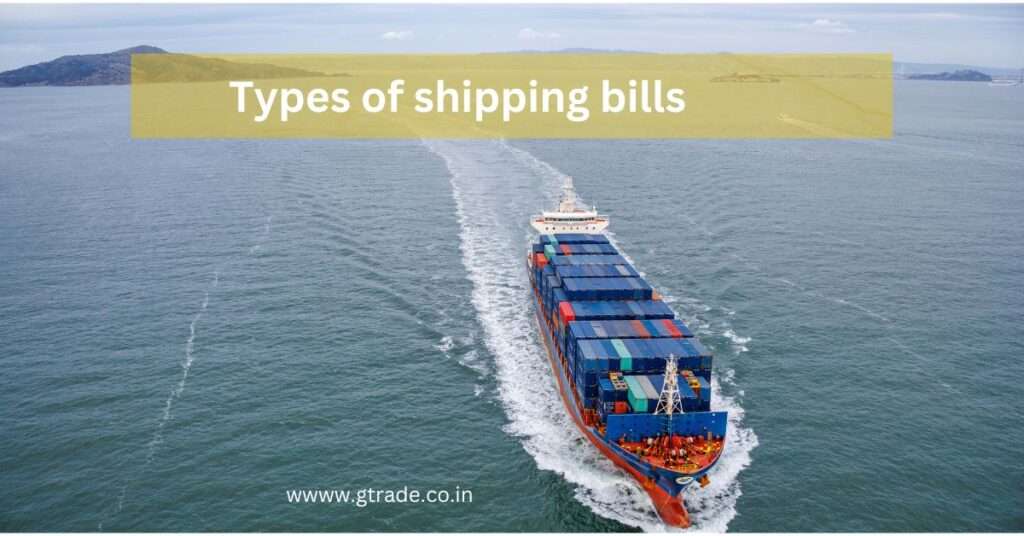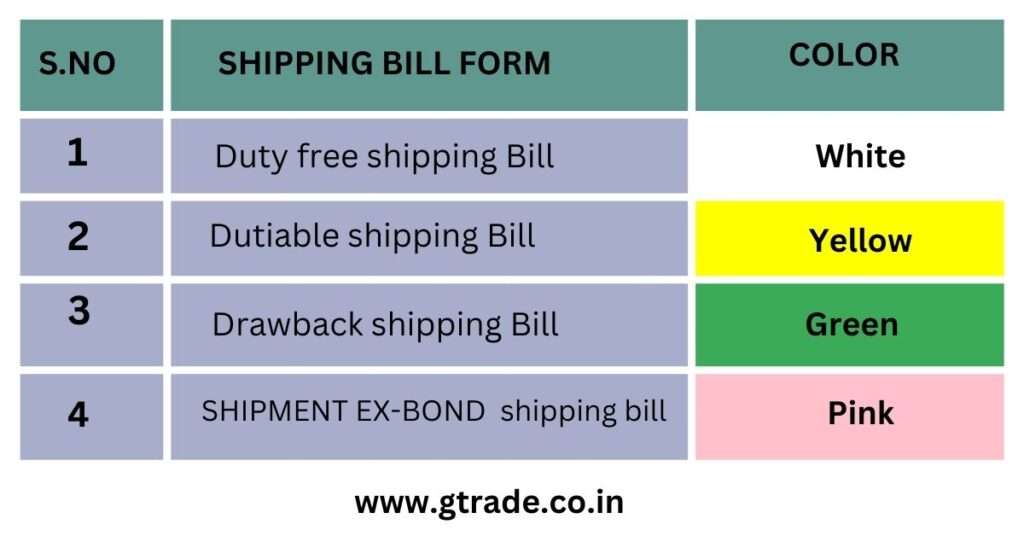
Different types of shipping bills for exports
Any international exporter who wants to transport his merchandise to overseas or foreign market should undergo custom clearance process. custom clearance is the first step in exporting of goods, without which cargo cannot be sent outside the country. Depending on the purpose of shipment exported, different types of shipping bill are issued for customs clearance of goods.
1. DUTY-FREE SHIPPING BILL
Used for export of goods which neither attract any Export duty/cess nor entitled to any Duty Drawback (White)
2. DUTIABLE SHIPPING BILL
This shippng bill is Used when export goods are subject to Export Duty/Cess.
Duty is charged on
- quantity basis (Fixed amount per kg. or per Metric tonn) or
- certain percentage of asses sable value (Yellow)
3. DRAWBACK SHIPPING BILL
This shipping bill is used when Duty Drawback is to be claimed (Green)
4. SHIPPING BILL FOR SHIPMENT EX-BOND
Used when the goods are to be exported which have been imported earlier and kept in bond prior to re-export (Pink)

5. coastal shipping bill
When goods are required to be shipped from one port to another port, along a country’s coastal line within their territorial waters and inland waterways the ‘coastal shipping bill’ needs to be filed. ‘Coastal shipping Bill’ is not an an export document. so it can’t be used as a regular shipping bill for exports.
The Ministry of Shipping has drafted a Coastal Shipping Bill, 2020 in lieu of part XIV of the Merchant Shipping Act, 1958. Some of the highlights of the Bill are as under:
- The definition of coastal shipping and coastal waters has been expanded.
- It is proposed to do away with the requirement of trading licence for Indian flag vessels for coastal trade.
- The Bill seeks to create a competitive environment and reduce transportation costs, while encouraging Indian vessels to increase their share in coastal shipping.
- The Bill also proposes integration of coastal maritime transport with inland waterways.
- There is a provision for a National Coastal and Inland Shipping Strategic Plan.

